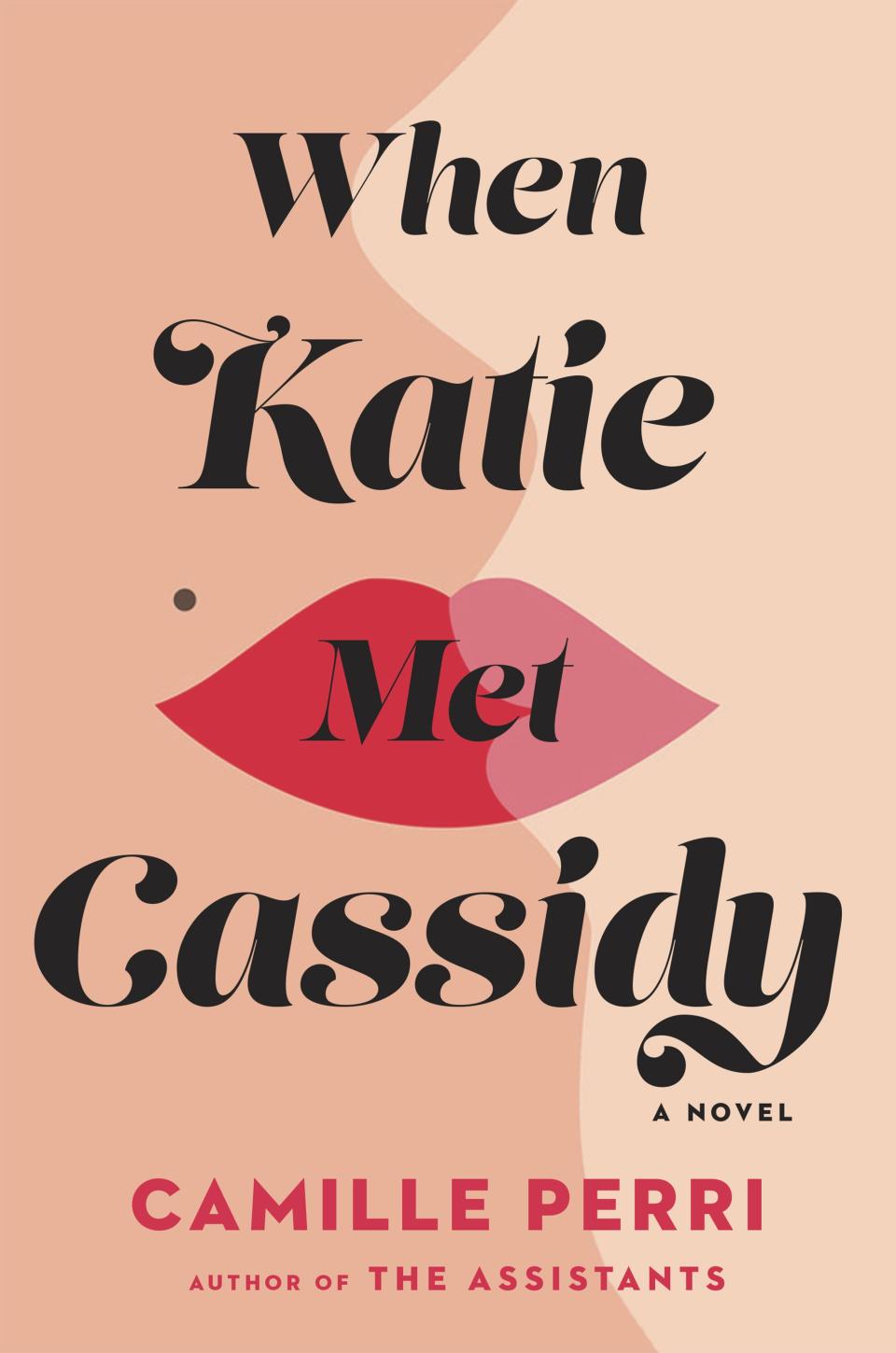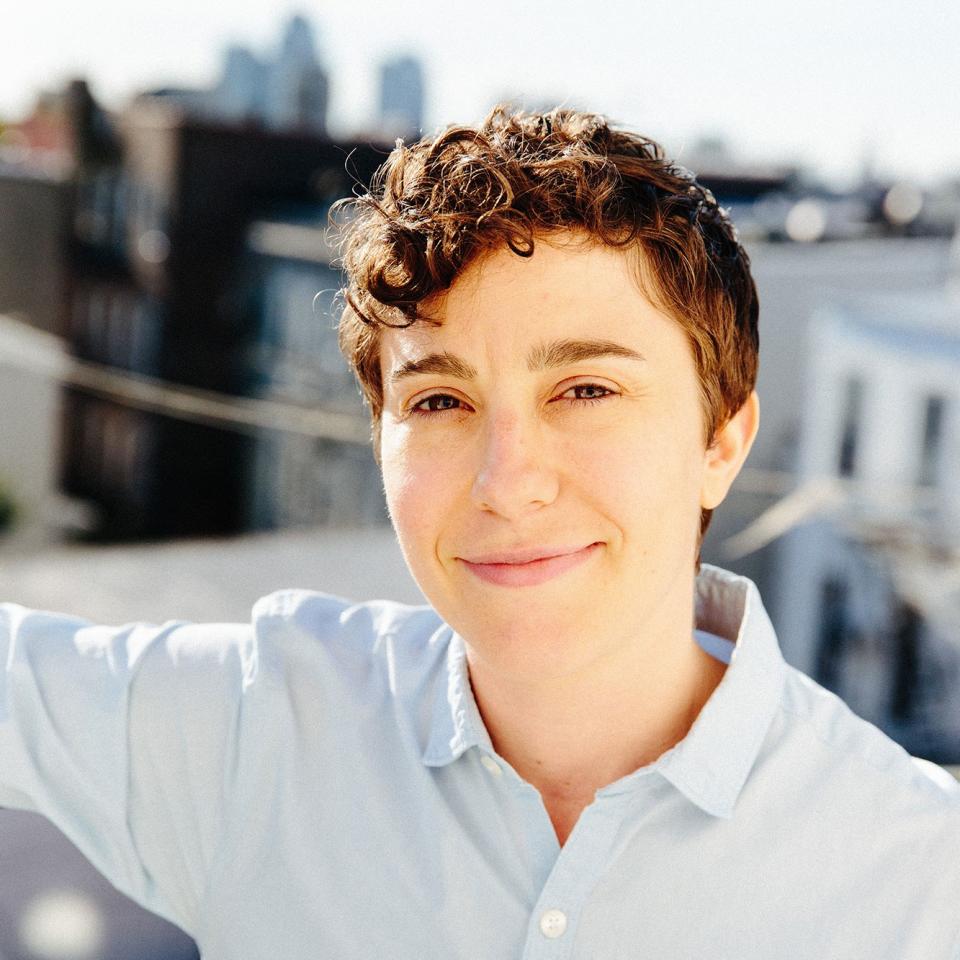Camille Perri’s When Katie Met Cassidy Is the Delightful, Sexy, Queer Rom-Com Novel of the Summer
The big, fat, sappy Hollywood romantic comedy has been declared dead in recent years—the genre has largely dried up at the major studios, with part of the purported struggle being that traditional ideas of romance—boy meets girl, boy loses girl, boy marries girl—no longer feel representative of modern lovers. But maybe—just maybe—it’s just the straight, typically white, gender-conforming rom-com that’s over. Because in the realm of queer love stories, there are definitive signs of life.
There was Call Me by Your Name, Oscar-nominee and just peachy Internet phenomenon about two gorgeous, ’80s-era men. There was the breakout success of Love, Simon, the YA novel turned film about a gay teen coming out and discovering young romance. And now there is When Katie Met Cassidy, author Camille Perri’s delightful, sexy, sweet novel about two women falling in love.
The book is a psychic break from the tropes of rom-coms past, blissfully free of tired bro BS and women made to chase emotionally unavailable men with the ultimate goal of diamond rings and white weddings. Instead, Katie—a basic, yet spirited, heretofore straight woman—explores the bounds of her sexuality with Cassidy, who is a bit like the queer Christian Grey (minus the creepy possessiveness and kink dungeon)—a commanding, confident, sexually potent presence who is sure to turn on readers across the sexual spectrum (I say while silently raising my hand). When Katie Met Cassidy cements what Call Me by Your Name started (at least for mass audiences): One doesn’t have to be queer to fall in love with, or indeed feel hot for, a queer love story.
Perhaps most powerful of all, When Katie Met Cassidy isn’t bogged down by death and disaster. On the contrary, it’s allowed to blossom in its own, magical little world—with witty banter and real estate porn and a tingly sex toy shopping scene—with all the makings of a Garry Marshall or Nora Ephron classic, except for the fact that it’s not a boy, but a girl, who is falling for the girl. And in all of this, as a proud, lesbian novel released by a major publisher (Penguin Random House), it’s a political statement in itself. Vogue spoke with Perri (whose last novel was 2015’s The Assistants) about writing a rom-com that represents the queer community, bending gender and sexual norms, and that saucy shopping scene.
First of all, what’s the best way to describe this book? Is it as a “queer love story”? A “lesbian love story”?
There is absolutely no right way. I purposely am trying to allow readers to put their own interpretations on it. It’s totally fine to call this a lesbian novel. I personally like the word “queer” because I feel like it encapsulates not just issues of sexuality but also gender. I veer toward the queer. I personally have been calling it, very simply, a romantic comedy about gender and sexuality.
Let’s talk about the gender part for a second. Cassidy identifies as female, but she presents male—she dresses male, has short hair, et cetera. Why did you want to address gender, as well as sexuality, in the book?
There have been a number of lesbian love stories and, generally, they’re about two very female girly girls. People, I think, automatically think of things like Kissing Jessica Stein. The more evolved we’ve become as a country—for the most part accepting homosexuality; we have same-sex marriage now—I still think that gender nonconformity upsets people a bit more. People ask questions like, “Well, who’s the man in this relationship? Who wears the pants?” I never really was a girly girl. I prefer masculine clothing. I would say I’m somewhat masculine presenting. My partner is the same. Sometimes when Helen and I are out, I can almost see, people aren’t quite sure, like, “What’s going on there? Are they boys? Are they girls? What’s happening?” I think if I were in a butch-femme relationship, people would look at us differently. This is what was in my mind. Cassidy, as a character, is groundbreaking in that we really haven’t seen a romantic story between two women where one of those women is masculine-presenting in mainstream culture.
What models did you have in terms of mainstream queer love stories?
You know, nothing that I could totally 100 percent say, “This represented me.” When I read Alison Bechdel’s Fun Home, it was the first time I saw drawings that looked like me. When I saw it on Broadway for the first time, I cried like a baby, because it didn’t occur to me that I had been missing something in my life for so long; that was a character on a Broadway stage that looked like me. A lot of queer stories revolve around tragedy . . . someone’s getting sick or dying or murdered. That is what I didn’t want. When I looked for models, I really looked at Nora Ephron’s work. Obviously, I looked at When Harry Met Sally; I also looked at Sleepless in Seattle and You’ve Got Mail, and her novel Heartburn, I could practically recite to you by heart. I looked at a lot of straight models, because I really did want this to be exactly like a fun, straight romantic comedy, just with a twist of it being about two women.
Was that a kind of statement in itself, at this moment in time, when people’s civil rights are under attack, to just let this book be a shiny, happy, queer rom-com without those ominous outside factors creeping in?
That, to me, is a form of resistance. While I was working on this book, the Trump election happened and I went through a whole existential crisis of, “What is the meaning of any of this? What is the point of even writing novels?” I got through that by thinking that writing this novel is as much a service as it is a gift to the queer community. The queer community deserves a happy ending just as much as anybody else. And straight readers should be able to enjoy this book just as much. Kumail Nanjiani, when he was interviewed on the red carpet for the Oscars, was talking about The Big Sick, and he said something like, “I’ve been identifying with white dudes starring in movies my whole life; and now you can identify with this movie that I’m starring in. It’s not that hard.” I’ve been watching straight romantic comedies my whole life. Now you get to read this.
I had to explain that to a friend because I was super hot for Call Me by Your Name, and I felt the same way about When Katie Met Cassidy!
I’ve had a few people say that to me. All the 20-somethings, who I think have open minds . . . but every middle-aged woman out there who read Fifty Shades and then went to see all the movies, I think this book is totally for them. Absolutely.

When Katie Met Cassidy is a sex-positive book; it’s described that way in the publisher’s notes. It’s sexy, and excitingly so, and is not shamed for it. I know you were the books editor at Cosmopolitan. No spoilers, did that job inform the inclusion of a sex toy shopping scene in the novel?
I’ve been a sex toy shopper for many years before I ever became an editor at Cosmo. I was an early adopter of Toys in Babeland. I will say that sitting in at Cosmo, some of the features meetings, and just hearing how a room of predominantly straight women talk about sex really did get my wheels turning in terms of stuff that I wanted to slip into this novel.
Such as . . . ?
We covered a book called Come as You Are by Emily Nagoski. I thought that book was great because it was about women not being conditioned to ask for what they want sexually, or to know what they want sexually. So many of us, as women, are raised from puberty on to put male pleasure at the center, almost having to be embarrassed to admit that they have sexual desires and to say to their boyfriend, “I like this,” or, “I don’t like that.” There are no labels in this book. Katie could just be any girl who has maybe fantasized about hooking up with her best friend because the sex might be better than with a boyfriend who’s really not paying attention to her needs.
Then, of course, there is Cassidy, who has had a lot of sex, but love, not so much.
Cassidy’s been in it for the sex, not for the love, for her entire adult life. In this novel, she is taking on the traditional role of the male hero in a romantic comedy. The traditional role of a male hero in a romantic comedy pretty much gets to do whatever the hell he wants. That’s pretty much how Cassidy runs her life. She just makes her own rules. She gets away with it because, in the queer community at least, butch women and masculine women can often sort of take on, and I’m going to say this very carefully . . . They can replicate a certain amount of male privilege.
Intriguing. How so?
At least in my day, you can edge toward machismo a little bit if you are a masculine-presenting female. There can be a tendency, before you find your right place, especially when you’re younger and just getting into the community and getting very excited about the idea of, “Oh, in this bar, I’m hot. All of these girls are into my short hair and my lanky, boyish body” . . . sometimes you get a big head. Then what do you do? You start acting like a dickhead teenage boy who’s just been handed the reins of the world by his new budding manhood. I think it’s something that people within the community are conscious of, especially more and more.
You touch on themes like this in the book, but there are no overt political statements in When Katie Met Cassidy. Was it a conscious decision not to get too much into LGBTQ issues and discrimination and such?
Absolutely. When I wrote The Assistants, I knew very much that I wanted to write about income inequality and student loan debt and the gender wage gap, but I wanted to put it in a really slick, fun package. That book ended up being described as a socially conscious novel in chick-lit clothing. I wanted to do the exact same thing with When Katie Met Cassidy. I wanted to sort of Trojan horse these issues of gender and sexuality into a really fun, fast-paced romantic comedy about two women. I think of it as like, if you have a pet, when you put the vitamin in the peanut butter. I think if you slip that little vitamin in there, people will be so busy enjoying the peanut butter, they won’t even care. It’s like the novelistic form of, “Be the change you want to see in the world.”
This interview has been edited and condensed.


